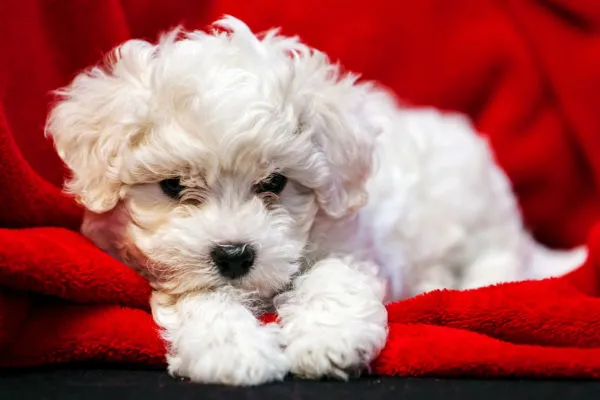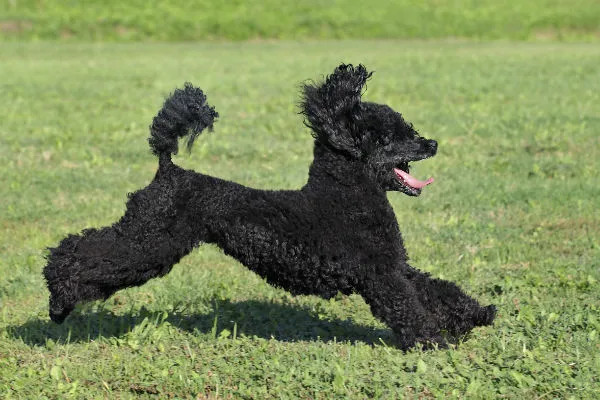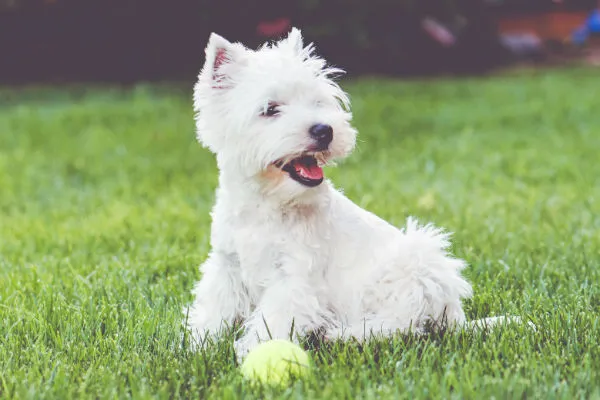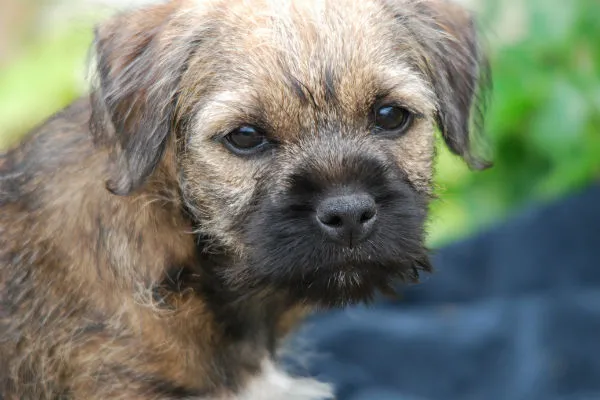Finding a canine companion that fits your lifestyle is crucial, and for many, minimizing shedding is a top priority. If you’re searching for a small dog with a gentle temperament and a coat that stays put, you’re in the right place. This guide explores a variety of small, friendly dog breeds known for their minimal to non-existent shedding, ensuring a cleaner home and fewer allergy concerns. We’ll delve into what makes these breeds unique and suitable for various households, helping you discover the perfect furry friend.
For those looking for options that are not exclusively tiny, exploring small to medium sized dogs that don t shed can also open up a wider range of possibilities.
Affenpinscher
 Affenpinscher dog
Affenpinscher dog
The name “Affenpinscher” translates to “monkey-like terrier,” a fitting description for this intelligent and distinctive breed. These fearless little dogs are alert and can deter unwanted guests, all while contributing minimal shedding to your home. Their wiry coat requires only twice-weekly brushing with a slicker brush and comb to maintain its neat, shaggy appearance. Renowned for their sense of humor, Affenpinschers are low-maintenance companions who bring joy and character.
Basenji
 Basenji dog
Basenji dog
If you admire the spirit of hounds but are hesitant about their shedding and typical “doggy” odor, the Basenji might be your ideal match. This breed sheds very little, and its short, fine coat needs minimal grooming beyond an occasional brush. Basenjis are also known for their quiet nature, making them excellent apartment dwellers, provided they receive adequate daily exercise and playtime.
Bichon Frise
 Bichon Frise dog
Bichon Frise dog
The Bichon Frise is a quintessential example of a small dog breed that truly does not shed. These cheerful and affectionate dogs are a popular choice for individuals with allergies. However, their beautiful, cloud-like coat requires diligent grooming. Their hair grows continuously, necessitating frequent brushing and occasional baths to maintain their signature “powder-puff” look. This consistent grooming routine is key to managing their coat.
For those interested in other breeds with similar characteristics, looking into small fluffy dogs that don t shed could reveal other delightful options.
Bolognese
 Bolognese dog
Bolognese dog
Similar to the Bichon Frise, the Bolognese boasts a distinctive fluffy coat composed of hair rather than typical fur. This breed is a non-shedder, meaning dead hair needs to be brushed out regularly to prevent matting. Daily grooming is essential to keep these lovable lap dogs looking their best and to maintain the luxurious texture of their coat.
Brussels Griffon
 Brussels Griffon dog
Brussels Griffon dog
Don’t let their small stature fool you; Brussels Griffons are robust and don’t require excessive pampering. Available in both smooth-coated and rough-coated varieties, they are minimal shedders and benefit from regular grooming. Their exercise needs are easily met with a daily walk and indoor play sessions. These loyal and affectionate dogs thrive in households where their families are often present.
Chinese Crested
 Chinese Crested dog
Chinese Crested dog
One effective way to combat shedding is to consider a hairless dog breed, and the Chinese Crested is a prime example. They come in two coat types: hairless, with hair only on their head, tail, and feet, and powderpuff, which has a fine, soft coat that sheds very minimally. Hairless Chinese Cresteds require special skin care to protect them from sun and cold and are more susceptible to skin irritations, making them a unique choice for dedicated owners.
Coton de Tulear
 Coton de Tulear dog
Coton de Tulear dog
The Coton de Tulear is distinguished by its long, fluffy, cotton-like coat, often considered hypoallergenic. This makes them an excellent choice for individuals with allergies and those seeking a small dog with minimal shedding. While they require daily grooming to keep their coats in top condition, their lighthearted and gentle personalities make the grooming effort a rewarding experience.
Havanese
 Havanese dog
Havanese dog
These charming dogs from Cuba offer owners both a lively personality and a coat that doesn’t shed much. This means less time spent de-linting furniture and more time enjoying playful activities with your Havanese. Their coat requires weekly brushing and regular baths to ensure they remain clean and healthy. Their spunky nature and minimal shedding make them a delightful companion.
Maltese
 Maltese dog
Maltese dog
The Maltese breed has a long history of charming humans, and their enduring appeal is partly due to their elegant, long white coats that shed very little, making them ideal lap dogs. To prevent matting, their coats need regular brushing, and occasional baths help keep their long, silky hair clean and free of debris. Their low shedding tendency makes them a beloved choice for many.
Lhasa Apso
 Lhasa Apso dog
Lhasa Apso dog
Originating from Tibet, the Lhasa Apso is a small breed that makes an excellent companion. They are known for being calm yet playful, enjoying brisk walks and relaxing with their owners. Lhasa Apsos do not shed significantly, but their coats require consistent maintenance. Many owners opt for a shorter “puppy cut” to simplify grooming and avoid the daily brushing of their long hair.
For owners who appreciate the traits of smaller breeds, exploring dogs that dont shed and stay small can provide further inspiration.
Miniature Schnauzer
 Miniature Schnauzer dog
Miniature Schnauzer dog
The Miniature Schnauzer is an intelligent, trainable, and cheerful dog that shares many traits with its larger Standard Schnauzer relatives. This terrier sheds very little, making them adaptable to both city and country living, as long as they are with their families. Regular grooming, including weekly brushing, is recommended to keep their coats in excellent condition.
Poodle
 Poodle dog
Poodle dog
Poodles are frequently at the top of mind when discussing small, non-shedding dogs, and for good reason. Poodles are known for being non-shedding and hypoallergenic. Miniature and Toy Poodles offer these desirable traits in smaller, highly intelligent packages, differing from Standard Poodles primarily in size. Their intelligence makes them exceptionally easy to train, and they are an active and proud breed. Their coat does, however, require regular professional grooming.
Scottish Terrier
 Scottish Terrier dog
Scottish Terrier dog
The Scottish Terrier, or Scottie, is a bold, confident breed with a big personality. Their wiry, weather-resistant coat sheds minimally, though they benefit from regular brushing, grooming, and occasional hand-stripping to maintain coat health and the breed’s characteristic outline. Scotties are clever and independent dogs with a strong prey drive, so careful supervision around smaller animals is advised.
Shih Tzu
 Shih Tzu dog
Shih Tzu dog
The Shih Tzu boasts a long and distinguished pedigree, having been a favored companion of royalty. These “little lion dogs” come in a variety of colors and patterns. Their long, silky hair is very low-shedding and looks particularly regal when brushed out, befitting their noble ancestry. This sturdy and lively toy breed carries themselves with an air of confidence, due to their proud posture and curled tails. Bred as house pets, their gentle and trusting nature makes them exceptional companions.
West Highland White Terrier
 West Highland White Terrier dog
West Highland White Terrier dog
The coarse, white coat of the West Highland White Terrier, affectionately known as the Westie, sheds very little. This sturdy little dog is intelligent, loyal, happy, and highly entertaining. They possess a curious nature and moderate energy levels, along with the independent streak common to terriers, which can sometimes present a training challenge.
Xoloitzcuintli
 Xoloitzcuintli dog
Xoloitzcuintli dog
Also known as the Mexican Hairless, the Xoloitzcuintli is an ancient and rare breed with both hairless and coated varieties. The hairless type has minimal hair on its head, while the coated variety sports a very short, fine coat that sheds minimally. Like other hairless breeds, Xolos require extra attention to their skin to protect them from environmental factors. They make attentive watchdogs and affectionate companions, and while they enjoy physical activity, they are known for their tranquil demeanor at home.
Yorkshire Terrier
 Yorkshire Terrier dog
Yorkshire Terrier dog
Sprightly, affectionate, and full of personality, the Yorkshire Terrier, or Yorkie, is a popular toy breed. These spunky lap dogs are highly favored for their charming demeanor and their remarkably low-shedding, silky coats. Daily brushing is essential to keep their beautiful hair in good condition. Despite their delicate appearance, Yorkies have working-class roots and were originally bred to hunt rats, though today they are just as content to be a beloved lap companion.
Other Small Dog Breeds That Don’t Shed
 Border Terrier dog
Border Terrier dog
The Terrier group is a treasure trove of small dogs with minimal to non-existent shedding. Breeds with wiry or coarse coats often shed less than others, making them excellent choices for those who dislike excessive shedding. Many breeds within the terrier family fit this description. Exploring small to medium breed dogs that dont shed can also reveal more options.
While there are numerous small dog breeds that don’t shed, it’s important to remember that “non-shedding” does not mean “no maintenance.” Thorough research into any breed you are considering is vital to ensure their needs align with your lifestyle and personality. To ensure your dog’s well-being and prevent health issues, always choose a dog from a reputable breeder, provide a high-quality diet, and schedule regular veterinary check-ups.
References
- American Kennel Club. (n.d.). Dog Breeds. Retrieved from www.akc.org/dog-breeds/
- American Kennel Club Marketplace. (n.d.). Puppies for Sale. Retrieved from marketplace.akc.org/puppies
